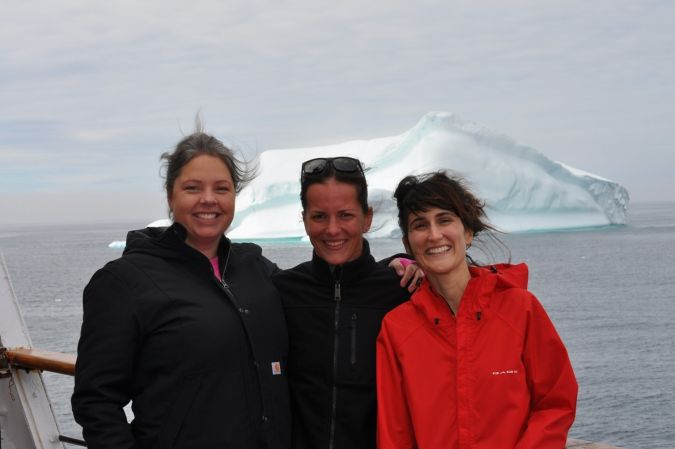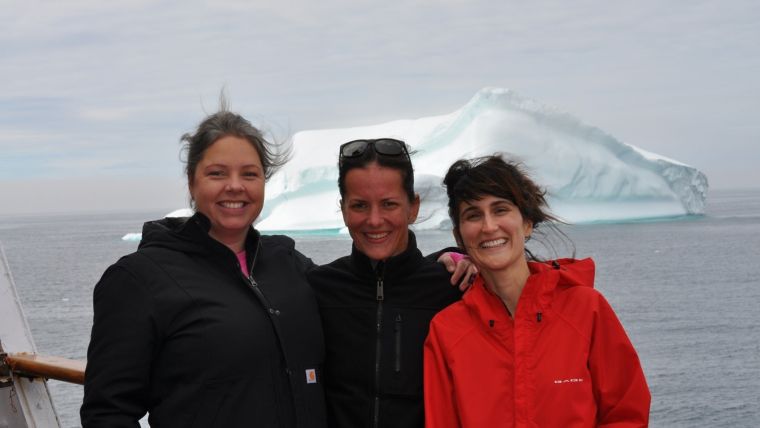Empowering women in hydrography: achieving meaningful change
Workplaces that foster equity, diversity and inclusion are not simply ‘doing the right thing’: they also benefit from the ensuing diversity of perspectives and increase their talent pool and economic productivity. Achieving meaningful transformation, however, requires employers and policymakers to address barriers and commit to making the cultural and structural changes necessary at all levels to build more inclusive workplaces.
Like other science, technology, engineering and mathematics (STEM) fields, hydrography has traditionally seen low rates of female participation. Though recently more women have entered the field, the COVID-19 pandemic may have adversely impacted some of these gains, since women scientists disproportionately bore the economic and socioeconomic costs of the lockdowns and school closures when compared to their male counterparts.
At the same time, the pandemic has also demonstrated that many jobs in hydrography can be performed effectively, at least in part, from home. These shifts in work style coupled with an awakening in the public consciousness in many parts of the world on issues of diversity and inclusion present an unprecedented opportunity for hydrographic organizations to lock in these cultural shifts and attract more women and other underrepresented groups to the profession.
Governments who develop policies to support diversity and inclusion in STEM fields will in turn foster greater participation in the sector and increase their GDP. For example, a 2015 analysis from the European Institute for Gender Equality found that closing the gender gap in STEM by 2050 would lead to a 2–3% per capita increase in EU GDP, equivalent to €610–€820 billion.
Flexible work arrangements that flourished during the pandemic are one tool that hydrographic organizations could adopt in the long term to support women in the workplace. On average, women still shoulder a relatively greater burden of domestic responsibilities. These arrangements afford all employees a better work-life balance and, when coupled with reliable childcare, allow parents to better balance domestic and workplace responsibilities.
I saw these benefits at first hand as a young mother and scientist working for the Canadian Hydrographic Service (CHS). Being privileged to live in a part of the world that saw minimal lockdowns and day-care closures, working from home greatly improved my quality of life. With childcare in close proximity, I could see more of my children and still breastfeed my youngest during the day, something I could not do with my older child when I returned to work in 2018 and did not have the option to work from home.
Across STEM fields, the underrepresentation of women begins in educational institutions and becomes even more pronounced in leadership roles. In my home country of Canada, more women than men obtain a university degree, but only half as many women opt for a degree in STEM (Statscan, 2016). In the field of hydrography, specifically, most leadership positions are still occupied by men. Of the International Hydrographic Organization (IHO) bodies, for example, only 13% are chaired by women.
I am pleased that as part of the United Nations’ Decade for Ocean Science for Sustainable Development (2021-2030), Canada has worked closely with partners on projects to promote gender equity. For example, Canada provided financial support for a research programme led by the World Maritime University to improve gender equality in ocean research and science-dependent governance systems. Canada also sponsored the IHO project Empowering Women in Hydrography (EWH), which aims to raise awareness of the different jobs available to women in hydrography and support them in reaching leadership positions and participating in governance.

The EWH project was endorsed by IHO members in November 2020. With the project funding in place, the IHO is now asking members to propose initiatives, but scoping the scale of the gender gap remains a challenge. As the chair of the IHO Capacity Building Sub-Committee, Evert Flier, put it: “The biggest challenge is men thinking there is not a problem. We could start raising awareness by having IHO Member States report on the gender distribution of their workforce in different parts of their organization and at different management levels.”
I am proud that my employer has begun to address issues of diversity and inclusion at home as well. For example, CHS has been partnering with Canadian universities to help attract candidates from more diverse backgrounds. We also formed the CHS Women in Hydrography Network, led by Annie Biron, to identify and recommend ways to overcome barriers to female participation in our workplace. Many difficult conversations were had in offices across the country. The network looked at issues ranging from health, hygiene and safety to work-life balance and harassment prevention. Members of the network also identified historical inequities, including gender barriers that limited women’s access to fieldwork.
While our work is ongoing, we are seeing signs of progress. When I first started with CHS in 2018, there were very few women in leadership roles, but this has changed dramatically in the past three years. Men still outnumber women at the director level, but we are starting to see gender equality at the managerial and supervisory levels.
Although women have participated in surveys at CHS for decades, they were typically in the minority on-ship. In a big milestone, the CHS had its first all-female survey crew in the Arctic last year. This is exciting, because it shows we are breaking down barriers. As a next step, CHS is now beginning to look beyond gender, to see the best way to support diversity and inclusion more broadly.
Seeing individuals who historically may not have had a chance to go on survey experience the joys of hydrography is very rewarding. As Sara Graham, one of our hydrographers from Nova Scotia, described: “I love that I get to be involved in offshore mapping projects. Often times the area you’re sounding has never been ‘seen’ by human eyes and you get the feeling like you’re an explorer – are you going to find really interesting undersea features like canyons or ravines with steep slopes? Every day is different.”
Acknowledgements
Special thanks to Dr Geneviève Béchard, Luigi Sinapi, Leonel Manteigas, Sarah Jones Couture, Annie Biron, Andrea White, Liisa Parameki, Evert Flier, Sara Graham and Sara Raymond for their input and review.

Value staying current with hydrography?
Stay on the map with our expertly curated newsletters.
We provide educational insights, industry updates, and inspiring stories from the world of hydrography to help you learn, grow, and navigate your field with confidence. Don't miss out - subscribe today and ensure you're always informed, educated, and inspired by the latest in hydrographic technology and research.
Choose your newsletter(s)
























